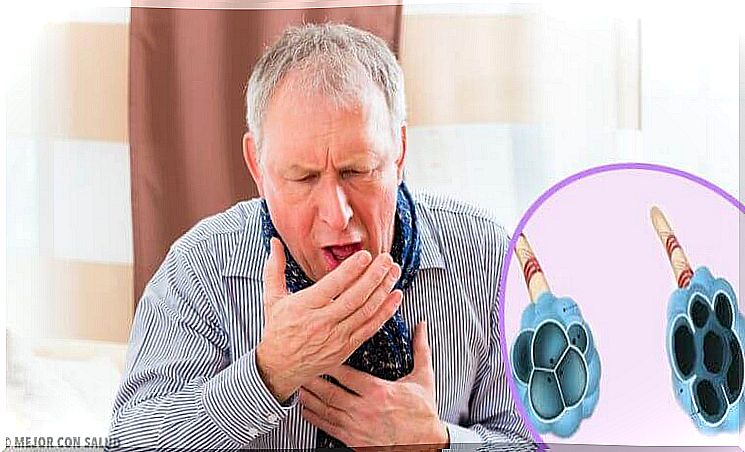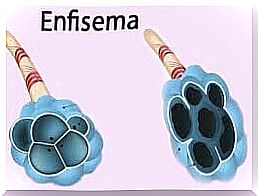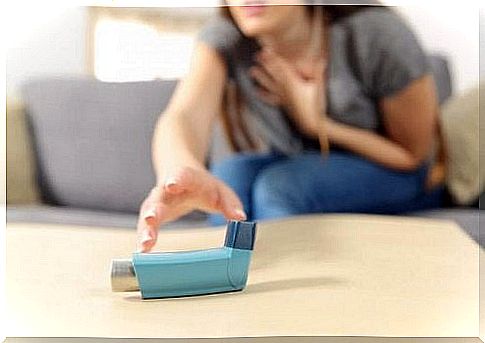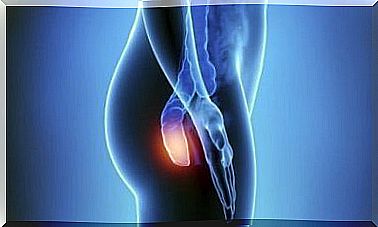Chronic Obstructive Pulmonary Disease (COPD)

Chronic obstructive pulmonary disease is a long-term disease that develops slowly. It affects the lungs and makes it difficult to breathe. This causes problems in performing daily tasks, which threaten our quality of life.
The term COPD is commonly used to describe chronic bronchitis and emphysema, two progressive lung diseases that can occur separately or together. The most common form of COPD is a combination of the two diseases.
Chronic bronchitis
As the name suggests, there is chronic inflammation (ongoing) in the airways (bronchi) of the lungs. Chronic bronchitis is defined as a cough that produces mucus, which occurs daily for at least 3 months for two or more consecutive years.
Bronchitis causes the lungs to produce excess mucus to keep the bronchi moist. This leads to coughing and narrowing of the airways, which makes it difficult for the air to flow freely. As a result, the individual is left without breath.
Emphysema

Emphysema occurs when the alveoli in the lungs become larger and begin to hurt. This makes the transfer of oxygen from the lungs to the blood less efficient. The alveoli collapse, which means that they are unable to occlude the microscopic airways called the bronchioles. This causes respiratory problems that make it extremely difficult to breathe in and out.
What are the symptoms of chronic obstructive pulmonary disease?
The signs of COPD tend to develop slowly over many years. The main symptoms range from breathing problems, wheezing and tightness in the chest, to productive coughing (mucus formation) most days.
A doctor decides whether COPD is mild, moderate or severe, depending on the various factors. First he will see if the patient experiences symptoms, how much effort it takes for the person to lose breath, how much it limits this person’s daily life.
Then he will see if the patient has frequent respiratory infections (colds or flu), if they have a chronic productive cough (ongoing); and how often they erupt. It should be pointed out that those with COPD generally get exacerbations (outbreaks), often caused by an infection of the respiratory tract, such as colds.
Severe COPD

In severe stages of COPD, there may also be other symptoms and signs of severe lung disease, such as:
- A blue tone in the skin (cyanosis).
- Fluid retention, which can cause swelling in the feet, ankles and legs.
- Extreme exhaustion
- Weight loss
What causes chronic obstructive pulmonary disease?
The vast majority of cases of chronic obstructive pulmonary disease are caused by smoking. Passive exposure to tobacco, especially in childhood, can also increase the risk of developing COPD. In some cases, COPD can be the result of prolonged exposure to dust or chemical fumes at work. Air pollution also contributes to the development and worsening of symptoms.
Risk factors

In addition to smoking and exposure to dust and smoke, which put you at risk, there are several other factors that can increase the likelihood of developing chronic obstructive pulmonary disease. These factors are:
- Family history of COPD (especially if they smoked).
- Family history of asthma (and if they have suffered for a long time).
- Problems with the respiratory tract and lungs in childhood.
Tests and diagnoses
To get a diagnosis of chronic obstructive pulmonary disease, a doctor will evaluate the patient through specific tests, which will inform them about the patient’s health condition, even better than the clear symptomatology and information obtained through the patient’s interview.
Of course, the doctor must check if the patient is a smoker, or if they have ever smoked, and if they work in a place that has exposure to dust, gases or smoke.
Tests that allow them to explore the background of the patient’s state of health are:
- Lung function tests. Spirometry is a lung function test, in which the patient breathes into a machine called a spirometer. The main measurements used to diagnose COPD are the total amount of air exhaled and the amount exhaled in one second.
- Chest X-ray or a computed tomography scan. These studies may show signs that you may have COPD. These imaging tests can help highlight other conditions that may be causing the symptoms.
- Measurement of gas in the bloodstream. With these tests, you can measure the amount of oxygen and carbon dioxide in your blood, to help assess how well your lungs are functioning.
Complications
- Anxiety and depression
- Heart failure
- Type 2 diabetes
- Pulmonary hypertension (high blood pressure in the pulmonary circulation)
- Polycythemia (increase in red blood cells)
- Osteoporosis (osteoporosis, a condition in which the bones become less dense and strong, which increases the risk of fractures)
When should you talk to your doctor?

When the person has been a smoker, is older than 35 years and presents the following symptoms:
- Difficulty breathing and wheezing. In the beginning, this is usually only observed during physical activity.
- Productive cough (expectoration of mucus) that affects the person several times a day, most days.
- Frequent respiratory infections (such as colds that cause coughing).
What can be done about chronic obstructive pulmonary disease?
The most important thing that can be done for yourself if you have COPD is to quit smoking immediately. It will improve your cough, reduce your breathing problems and will also reduce lung damage.
COPD is a progressive disease, and unfortunately there is no cure for it. It is also not possible to reverse the lung damage that has already been done. However, there are treatments that help improve lung function, relieve symptoms and slow the progression of the disease.









